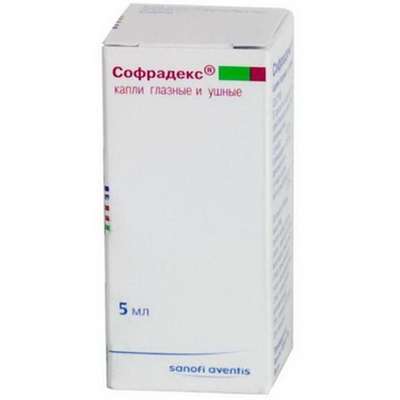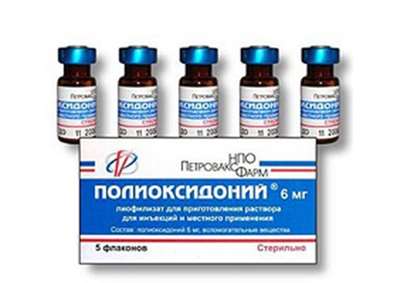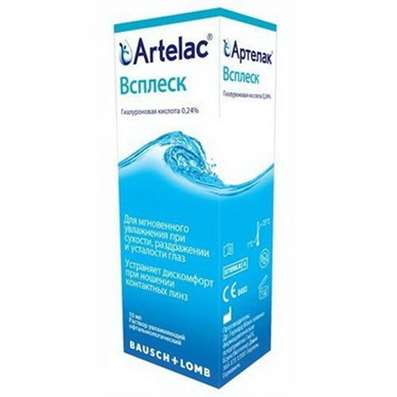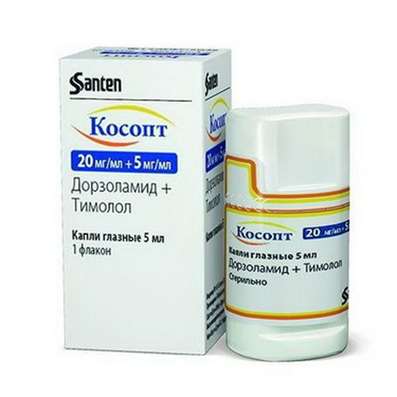Instruction for use: Flunisan
I want this, give me price
Dosage form: capsules
Active substance: Fluoxetine*
ATX
N06AB03 Fluoxetin
Pharmacological groups:
Antidepressant
The nosological classification (ICD-10)
F32 Depressive episode: Adynamic subdepression; Astheno-adynamic subdepressive states; Asthenoadressive disorder; Astheno-depressive disorder; Asthenodepressive state; Astheno-depressive state; Major Depressive Disorder; Vyaloapatichesky depression with retardation; Double Depression; Depressive pseudodement; Depressive illness; Depressive mood disorder; Depressive disorder; Depressive mood disorder; Depressive state; Depressive disorders; Depressive syndrome; Depressive syndrome larviated; Depressive syndrome in psychoses; Depressed masks; Depression; Depression Depletion; Depression with the phenomena of inhibition within the framework of cyclothymia; Depression is smiling; Involutional depression; Involutionary melancholy; Involutional depression; Manic-depressive disorder; Masked Depression; Melancholic Attack; Neurotic depression; Neurotic depression; Shallow Depression; Organic depression; Organic depressive syndrome; Simple depression; Simple melancholic syndrome; Psychogenic depression; Reactive depression; Reactive depression with moderate psychopathological symptoms; Reactive depressive states; Reactive depression; Recurrent depression; Seasonal depressive syndrome; Severostatic depression; Senile Depression; Symptomatic Depression; Somatogenic depression; Cyclotymic depression; Exogenous depression; Endogenous depression; Endogenous Depressive Conditions; Endogenous Depression; Endogenous depressive syndrome
F33 Recurrent depressive disorder: Major depressive disorder; Secondary depression; Double Depression; Depressive pseudodement; Depressive mood disorder; Depressive disorder; Depressive mood disorder; Depressive state; Depressive syndrome; Depressed masks; Depression; Depression is smiling; Involutional depression; Involutional depression; Masked Depression; Melancholic Attack; Reactive depression; Reactive depression with moderate psychopathological symptoms; Reactive depressive states; Exogenous depression; Endogenous depression; Endogenous Depressive Conditions; Endogenous Depression; Endogenous depressive syndrome
F42 Obsessive-compulsive disorder: Obsessive-compulsive syndrome; Obsessive compulsive states; Obsessive-compulsive syndrome; The Obsession Syndrome; The obsession neurosis; Obsessive-compulsive neurosis; Obsessions
F50.0 Anorexia nervosa: Anorexia nervosa syndrome; Anorexia nervosa; Anorexia nervously-psychical; Cachexia nervy; Psychogenic anorexia
Composition and release form
Tablets - 1 table.
fluoxetine (in the form of fluoxetine hydrochloride - 22.40 mg) 20 mg
auxiliary substances: silicate MCC; pregelatinized starch; magnesium stearate; dye indigocarmine (indigotine) E132
in a blister of 10 pcs .; in a pack of cardboard 3 blisters.
Description of dosage form
Round biconvex tablets are bluish-white in color with a risk on one side.
Pharmachologic effect
Pharmacological action - antidepressant.
Antidepressant group SSRIs. Has a timoanaleptic and stimulating effect.
Pharmacodynamics
Selectively blocks the reverse neuronal capture of serotonin in the 5-HT receptors of synapses of neurons of the central nervous system. Inhibition of reuptake of serotonin leads to an increase in the concentration of this neurotransmitter in the synaptic cleft, enhances and prolongs its effect on postsynaptic receptor sites. In therapeutic doses, fluoxetine blocks the seizure of serotonin by human platelets. It is a weak antagonist of muscarinic, H1-histamine, adrenergic alpha1 and alpha2 receptors, has little effect on dopamine reuptake. It causes a reduction in obsessive-compulsive disorders, as well as a decrease in appetite, which can lead to a decrease in body weight. Does not cause sedation. When taken in moderate therapeutic doses, it practically does not affect the function of the cardiovascular system.
Pharmacokinetics
Absorption: when ingested well absorbed from the digestive tract, eating does not affect bioavailability. Tmax in the blood plasma after oral administration is 6-8 hours.
Distribution: fluoxetine binds to a large extent with plasma proteins, including albumin and alpha1-glycoprotein (about 95%) and is well distributed in the body (Vss reaches 20-40 l / kg), Cmax - 15-55 ng / ml, the drug easily penetrates through the BBB.
Equilibrium concentrations in the plasma are achieved after several weeks of application of the drug, it is characteristic that the concentrations achieved with prolonged use do not differ from those that were achieved after 4-5 weeks of fluoxetine.
Metabolism: fluoxetine has a non-linear pharmacokinetic profile with the effect of first passage through the liver. In the liver, it is metabolized by the polymorphic enzyme CYP2D6 to the active metabolite of norfluoxetine and a number of other unidentified metabolites.
Excretion: T1 / 2 fluoxetine is from 4 to 6 days, its active metabolite is from 4 to 16 days. In patients with cirrhosis of the liver, T1 / 2 is 3-4 times longer. Metabolites are excreted by the kidneys (80%) and with fecal masses (15%), mainly in the form of glucuronides. The drug is excreted in breast milk (up to 25% of the concentration in the blood serum).
In the body, the therapeutic concentration of fluoxetine is maintained 5-6 weeks after discontinuation of therapy.
Indications for the Flunisan
depression of different etiology;
bulimia nervosa;
obsessive-compulsive disorder.
Contraindications
hypersensitivity to fluoxetine or other components of the drug;
simultaneous administration of MAO inhibitors (and within 14 days after their cancellation);
simultaneous administration of thioridazine and a period of up to 5 weeks after its withdrawal;
simultaneous administration of pimozide;
age to 18 years;
pregnancy and lactation.
With caution: suicidal mood, diabetes mellitus, epileptic syndrome of various genesis and epilepsy (including in the anamnesis), renal and / or hepatic insufficiency.
Application in pregnancy and lactation
Application during pregnancy and during lactation is contraindicated.
Side effects
From the side of the central nervous system: increased suicidal tendencies, anxiety, headache, tremor, agitation, increased irritability, sleep disturbance, dizziness, drowsiness, asthenic disorders, mania or hypomania, seizures.
From the digestive system: gastrointestinal disorders (nausea, diarrhea, vomiting, taste change), decreased appetite, dry mouth or hypersalivation.
Allergic reactions: skin rash, hives, myalgia, arthralgia, fever.
From the genitourinary system: urinary incontinence or retention, dysmenorrhea, vaginitis, decreased libido, impaired sexual function in men (slowing of ejaculation).
Other: increased sweating, tachycardia, visual acuity, weight loss, systemic disorders of the lungs, kidneys or liver, vasculitis.
Interaction
Strengthens the effects of alprazolam, diazepam, ethanol and hypoglycemic drugs.
Increases the concentration in the plasma of phenytoin, tricyclic antidepressants, maprotiline, trazodone by 2 times (it is necessary to reduce the dose of tricyclic antidepressants by 50% with simultaneous application).
Against the background of electroconvulsive therapy, it is possible to develop long-term epileptic seizures.
Perhaps an increase in the concentration of lithium - the risk of toxic effects of lithium. These drugs should be used simultaneously with caution, it is recommended that frequent determination of the concentration of lithium in the serum.
Tryptophan enhances the serotonergic properties of fluoxetine (increased agitation, motor anxiety, gastrointestinal disorders).
MAO inhibitors increase the risk of developing serotonin syndrome (hyperthermia, chills, increased sweating, myoclonus, hyperreflexia, tremor, diarrhea, movement coordination disorders, autonomic lability, agitation, delirium and coma).
JIC, which exert a depressing effect on the central nervous system, increase the risk of side effects and increased oppressive effects on the central nervous system. When used simultaneously with JIC, which have a high degree of binding to proteins, especially with anticoagulants and digitoxin, it is possible to increase plasma concentrations of free (unbound) drugs and increase the risk of developing adverse effects.
Dosing and Administration
Inside, at any time, regardless of food intake.
Depression of various etiologies. The initial dose is 20 mg / day (1 table) in the morning; if necessary weekly dose is increased by 20 mg / day for 1-4 weeks, up to 40-60 mg per day, divided into 2-3 doses. The maximum daily dose is 80 mg.
Nervous bulimia. The recommended dose is 60 mg per day in 3 divided doses.
Obsessive-compulsive disorder. The initial dose is 20 mg per day, with insufficient effectiveness, the dose is increased to 60 mg per day in 3 divided doses.
Elderly patients are recommended an initial daily dose of 20 mg, the maximum daily dose of the drug is 60 mg in 3 divided doses. The course of treatment - 3-4 weeks.
In patients with impaired liver and kidney function, lower doses and lengthening of the interval between doses are recommended.
Overdose
Symptoms: nausea, vomiting, arousal, convulsions, tachycardia.
Treatment: gastric lavage, the appointment of activated charcoal, with convulsions - the use of anxiolytic drugs (diazepam), symptomatic therapy.
Special instructions
In the treatment of patients with body weight deficiency, anorexigenic effects should be considered (a progressive loss of body weight is possible).
In patients with diabetes mellitus, administration of fluoxetine increases the risk of developing hypoglycemia, and hyperglycemia - when it is withdrawn. In this regard, the dose of insulin and / or any other hypoglycemic JIC used orally should be adjusted. Before the onset of significant improvement in treatment, patients should be under the supervision of a physician.
The interval between the end of therapy with MAO inhibitors and the initiation of treatment with fluoxetine should be at least 14 days; between the end of treatment with fluoxetine and the onset of therapy with MAO inhibitors - at least 5 weeks.
With liver diseases and in old age, treatment should be started with 1/2 dose.
During treatment should refrain from taking ethanol and practicing potentially dangerous activities that require increased attention and speed of mental and motor reactions.
Conditions of leave from pharmacies
On prescription.
Storage conditions for Flunisan
In dry, the dark place at a temperature of 15-25 ° C.
Keep out of the reach of children.
Shelf life of Flunisan
3 years.
Do not use after the expiry date printed on the package.

 Cart
Cart





